Chris Grinter, on July 25th, 2011 This Monday I am departing from the usual Arctiinae for something completely different – a microlep! This is a Nepticulidae, Stigmella diffasciae, and it measures in at a whopping 6 mm. I can’t take credit for spreading this moth – all of the nepticulids I have photographed are from the California Academy of Sciences and spread by Dave Wagner while he was here for a postdoctorate position.
The caterpillars mine the upper-side of the leaves of Ceanothus and are known only from the foothills of the Sierra Nevada in California. If you’re so inclined the revision of the North American species of the genus is freely available here (.PDF).
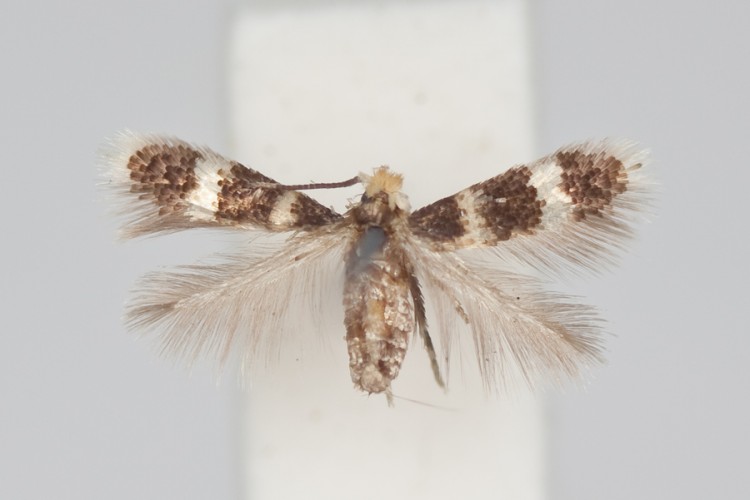 Stigmella diffasciae (Nepticulidae)
Chris Grinter, nuo 22 Lie, 2011 Tai buvo šiek tiek, o nuo paskutinio GOP iššūkis, bet tai yra futbolo. Aš tikiuosi, jie buvo tiesiog per daug tingus, kad rasti tinkamesnę vaizdas…

Chris Grinter, on July 19th, 2011 What would Jesus do if he had some free time – maybe cure a disease, end a war, or feed the starving – but nah, everyone sees that coming. Why not shock them to the core – burn your face on a Walmart receipt! Bent jau, that’s what a couple in South Carolina believe to have found, a Walmart receipt with Jesus’s face on it. This isn’t exactly new or exciting, humans have a wonderful ability to recognize a face in just about anything. Jesus and other characters “appear” on random things all the time, and even in 2005 a shrine was built to the Virgin Mary around a water stain in a Chicago underpass.
Pareidolia anyone? Tiesą sakant,, that face looks pretty convincing, I’m not too sure this wasn’t just faked or “enhanced”. The closeups even look like there are fingerprints all over it. Since I don’t have a walmart anywhere near me or a walmart receipt on hand I can’t determine how sensitive the paper is and how easy it would have been to do – but how long do you think before it shows up on ebay? Bet kokiu atveju, it looks much more like James Randi to me than Jesus (at least we actually know what Randi looks like!).
 from CNN
Chris Grinter, liepos 18, 2011 Ant Arthropoda, kolega SFS tinklaraštininkas Michaelas Bokas pasidalino savo lauko bičiulio atvaizdu, Prijunkite žalią medžio varlę. Pirma mintis buvo apie panašią medžio varlę apsėstas pasveikino mane visur, kur buvau Santa Rosa nacionaliniame parke, Kosta Rika. nereikia nė sakyti, Kosta Rika įgyja staigų įprotį dvigubai patikrinti viską, ką ruošiatės daryti. Ši rūšis žinoma kaip pieno varlė (Phrynohyas venulosa) dėl didelio pieno baltumo toksiškų sekretų kiekio. Viena pirmųjų istorijų, kurią Danas Janzenas man papasakojo, kai buvau su juo Santa Rosoje, buvo apie šią rūšį – ir netyčia pasitrynė akį jį prilaikęs. Laimei, aklumas ir deginimas buvo tik laikina.
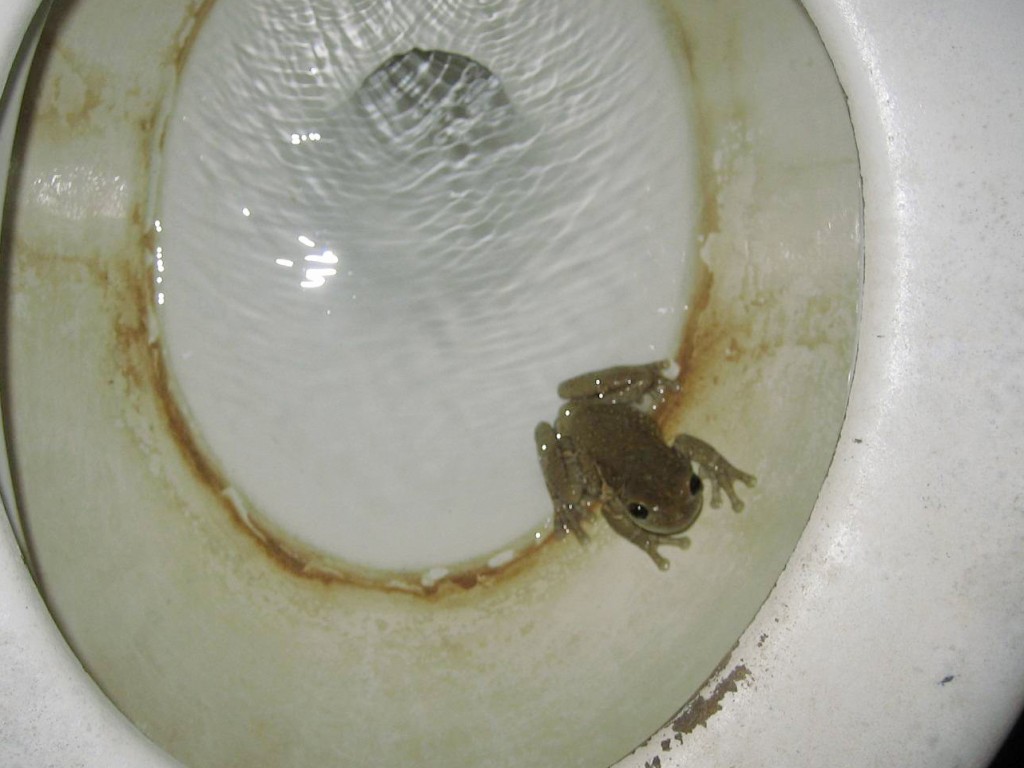 Pieno varlė: Phrynohyas venulosa
Chris Grinter, liepos 18, 2011 I’ll keep the ball rolling with Arctiinae and post a photo today of Ctenucha brunnea. This moth can be common in tall grasses along beaches from San Francisco to LA – although in recent decades the numbers of this moth have been declining with habitat destruction and the invasion of beach grass (Ammophila arenaria). But anywhere there are stands of giant ryegrass (Leymus condensatus) you should find dozens of these moths flying in the heat of the day or nectaring on toyon.
 Ctenucha brunnea (Erebidae: Arctiinae)
Chris Grinter, liepos 12 d, 2011 Na, kaip tikriausiai atspėjote, tema nėra tokia šokiruojanti, kaip rodo mano pavadinimas, bet negalėjau atsigręžti iš „Guardian“ straipsnio. Man tikrai juokinga, kai sutinku ką nors, kas sakoma, kad mokslininkai yra “apstulbęs”, “sutrikęs”, “sukrėstas”, “suglumęs”, – Manau, tai tema kitam kartui… Nepaisant to, a tikrai cool butterfly has emerged at the “Sensational Butterflies” exhibit at the British Museum in London – a bilateral gynandromorph! The Guardian reports today that this specimen of Papilio memnon just emerged and is beginning to draw small crowds of visitors. I know I’d love to see one of these alive again – although the zoo situation would take away quite a bit of the excitement. I think the only thing more exciting than seeing one of these gyventi lauke būtų neto ONE save!
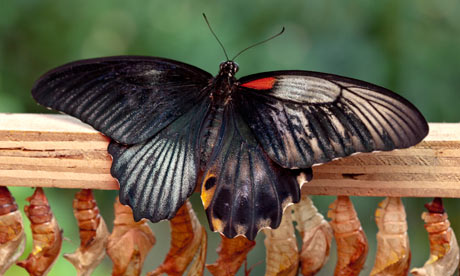
Vienas mažai ką suveikė mano skeptiškai jutikliai ir tai yra ne iš straipsnio paimta iš drugelių kuratorius pabaigoje citata, Blanca Huertas. “Gynandromorph drugelis yra įspūdingi mokslo reiškinys, ir yra sudėtingų evoliucinių procesų produktas. Tai fantastiška, kad atrado vienas perinti apie muziejų priežasčių, ypač jei jie yra tokie reti.”
Gerai, Nemanau, specialiai pamatyti, kaip jie yra “produktas … evoliuciniai procesai” kadangi visi gyvenimas visi formos yra evoliucijos produktas. Tai yra sterilus “trikdžių” kad yra kietas, bet nėra nieko, kad buvo specialiai išsivystė už ar prieš. Galbūt tai būtų labiau sugeba skambinti tai įspūdingi procesas genetikos (kurioje gaminiai iš tikrųjų aprašo tikslumas). taip pat – butterflies emerge as adults and hatch as caterpillars – but that’s just me being picky.
Chris Grinter, on July 11th, 2011 Today’s moth is a beautiful and rare species from SE Arizona and Mexico: Lerina incarnata (Erebidae: Arctiinae). Like many other day flying species it is brilliantly colored and quite likely aposematic. After all, the host plant is a milkweed and the caterpillar is just as stunning (žemiau).
 Lerina incarnata (Erebidae: Arctiinae)
This image of an old, spread specimen hardly does the animal justice, but one lucky photographer found a female ovipositing at the very top of a hill outside of Tucson, Arizonoje. While you’re at it go check out some of Philip’s other great photographs on SmugMug.
 Lerina incarnata - Philip Kline, BugGuide As I mentioned above this moth also has an equally impressive caterpillar that feeds on Ascleapias linaria (pineneedle milkweed).
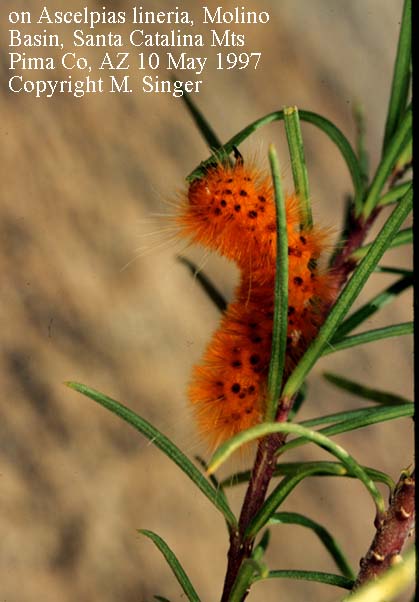
Chris Grinter, on July 5th, 2011 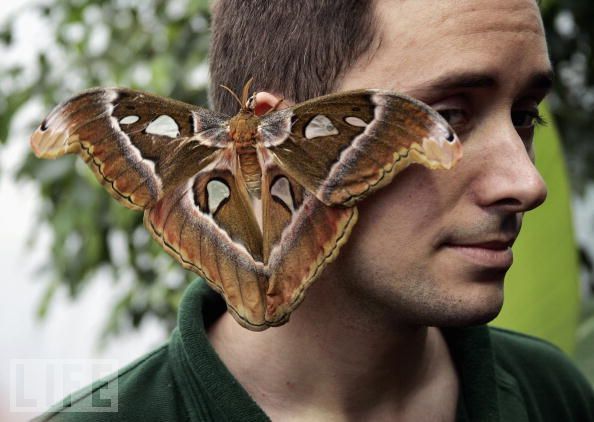
It seems like there is a preponderance of urban legends that involve insects crawling into our faces while we sleep. The most famous myth is something along the lines of “you eat 8 spiders a year while sleeping“. Actually when you google that the number ranges from 4 to 8… up to a pound? Not surprising things get so exaggerated online, especially when it concerns the ever so popular arachnophobia. I doubt the average American eats more than a few spiders over their entire lifetime; your home simply shouldn’t be crawling with so many spiders that they end up in your mouth every night! A similar myth is still a myth but with a grain of truth – that earwigs burrow into your brain at night to lay eggs. It isn’t true that earwigs are human parasites (thankfully), but they do have a predisposition to crawl into tight, damp places. It is possible that this was a frequent enough occurrence in Ye Olde England that the earwig earned this notorious name. Cockroaches have also been documented as ear-spelunkers – but any crawly insect that might be walking on us at night could conceivably end up in one of our orifices.
I have however never heard of a moth crawling into an ear until I came across this story today! I guess a confused Noctuid somehow ended up in this boy’s ear, although I can’t help but to wonder if he put it there himself… Moths aren’t usually landing on people while they are asleep nor are they that prone to find damp, tight spots. But then again anything is possible, some noctuids do crawl under bark or leaves in the daytime for safe hiding. I even came across another story of an ear-moth form the UK (not that the Daily Mail is a reputable source).
natūraliai, some lazy news sources are using file photos of “kandys” instead of copying the photo from the original story. It’s extra hilarious because one of the pictures used is of a new species of moth described last year by Bruce Walsh in Arizona. Lithophane leeae has been featured on my blog twice before, but never like this!
On a closing note here is a poem by Robert Cording (also where the above image was found).
Consider this: a moth flies into a man’s ear
One ordinary evening of unnoticed pleasures.
When the moth beats its wings, all the winds
Of earth gather in his ear, roar like nothing
He has ever heard. He shakes and shakes
His head, has his wife dig deep into his ear
With a Q-tip, but the roar will not cease.
It seems as if all the doors and windows
Of his house have blown away at once—
The strange play of circumstances over which
He never had control, but which he could ignore
Until the evening disappeared as if he had
Never lived it. His body no longer
Seems his own; he screams in pain to drown
Out the wind inside his ear, and curses God,
Who, hours ago, was a benign generalization
In a world going along well enough.
On the way to the hospital, his wife stops
The car, tells her husband to get out,
To sit in the grass. There are no car lights,
No streetlights, no moon. She takes
A flashlight from the glove compartment
And holds it beside his ear and, unbelievably,
The moth flies towards the light. His eyes
Are wet. He feels as if he’s suddenly a pilgrim
On the shore of an unexpected world.
When he lies back in the grass, he is a boy
Vėlgi. His wife is shining the flashlight
Into the sky and there is only the silence
He has never heard, and the small road
Of light going somewhere he has never been.
– Robert Cording, Common Life: Poems (Fort Lee: CavanKerry Press, 2006), 29–30.
Chris Grinter, birželio 30, 2011 
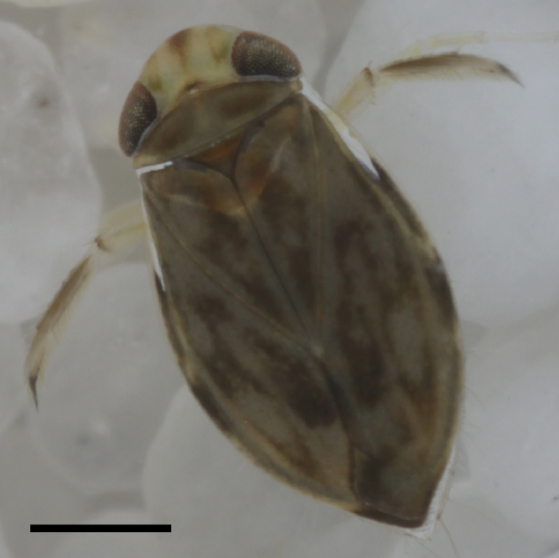 Micronecta SCHOLTZ Į Europos kaimo kalvos gyvas su įsimylėjęs choras, rėkia, vyrai vandens klaidas. Mažai vabzdžių aukščiau, Micronecta SCHOLTZ (Corixidae), priemonės ne Didžiulį 2.3mm ir dar gamina paspaudę / lengvai šurmuliuos garsą girdimi žmogaus ausies virš vandens paviršiaus. Norėdami įdėti, kad perspektyvos: bando išgirsti ką nors kalbėti po vandeniu stovint prie baseino yra beveik neįmanoma, dar šis minučių vabzdžių generuoja spustelėkite garsiai pakankamai, kad būtų supainioti su sausumos nariuotakojų. Nors tai neatrodo labai įspūdingas, kai mes esame apsupti kitų garsiai vabzdžių, pavyzdžiui, cikada, P. scholtzi pasirodo, kad tai stulbinančiai garsus gyvūnas, kai atsižvelgiama į kūno dydį ir terpę, kuria garsas sklinda, kad pasiektų mūsų ausį.. Įskaitykite skaičius, kad paspaudimų po vandeniu intensyvumas gali siekti iki 100 dB (Garso slėgio lygis, SPL). Sutraukite mus į vabzdžių pasaulį ir ši garso gamyba prilygsta a plaktukas tuo pačiu atstumu! Taigi kas, po velnių, leido šiai klaidai sukelti tokį triukšmą ir išsisukti pasaulyje pilname plėšrūnų?
Autoriai natūraliai atkreipia dėmesį į tai, kokie stebina šie rezultatai. Pirmas dalykas, kuris išryškėja, yra tai, kad vandens valtininkai neturi turėti klausos plėšrūnų, nes jie iš esmės plaukioja aplinkui, sukeldami didžiausią fiziškai įmanomą triukšmą bet kuriam mažam gyvūnui.. Tikrai tai nėra labai netikėta, nes dauguma povandeniniai plėšrūnai yra griežtai regėjimo medžiotojai (laumžirgis lervos, vandens klaidas ir vabalai ir tt…). Labai tikėtina, kad seksualinė atranka vadovaujasi šių stridulatory skambučių plėtrą į tokių stulbinantis lygius. Antra labiausiai stebina dalykas yra aiškus, kai jūs graph tik kaip garsiai šie vabzdžiai yra palyginti su jų kūno dydžiu. Pasibaigus diagramoje viršuje Afalina (T. sutrumpintas) su savo garsiąją sonaras. Tačiau didžiausias išskirčių iš tikrųjų mūsų mažai vabzdžių apačioje kairėje su aukščiausiu santykis tarp garso ir kūno dydžiu (31.5 su vidurkiu 6.9). Joks kitas žinomas gyvūnų artimą. Tikėtina, nors, kad toliau tyrinėjant kitų vandens vabzdžių gali duoti panašios, jei ne daugiau netikėtų rezultatų!
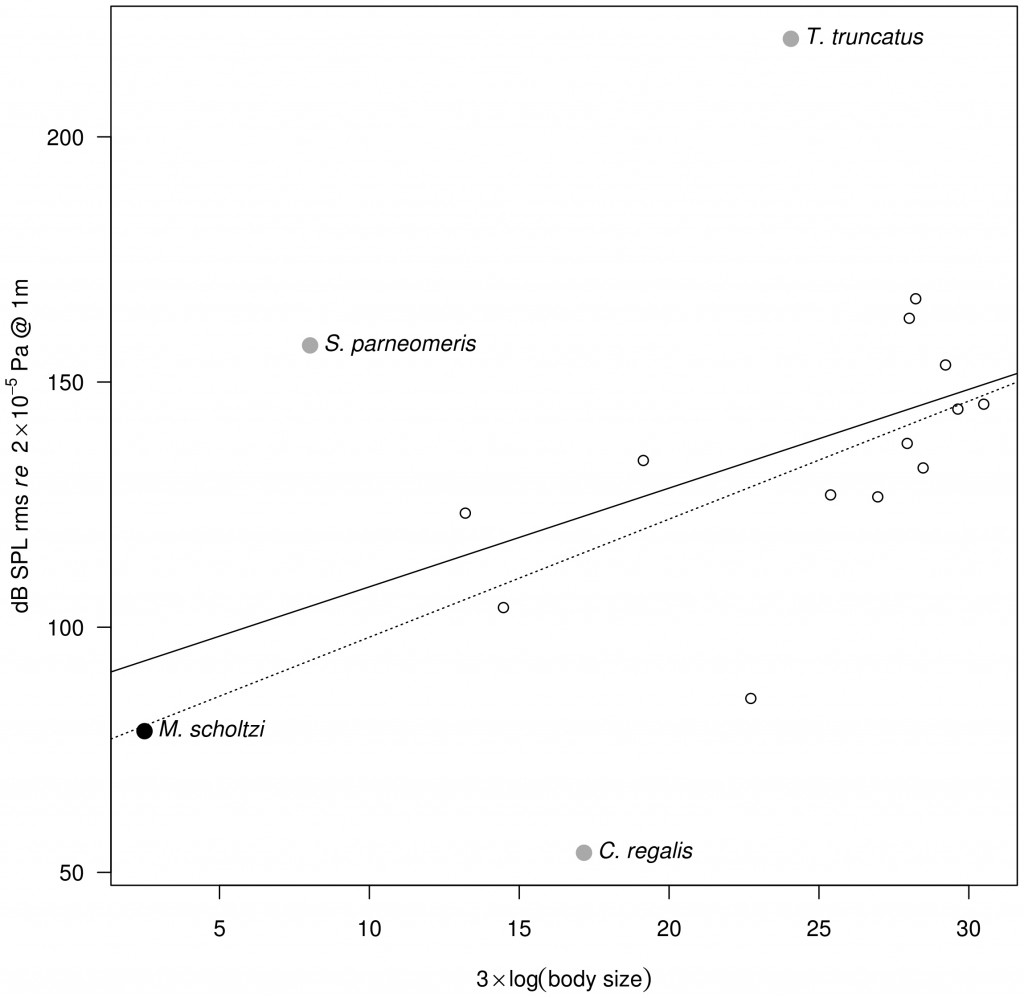
Tiksliau apie “rėkia”, klaidas (klaidų šiuo atveju yra teisingas; Corixidae priklauso tam Hemiptera – tikrieji klaidas) Tikėtina, kad būti stridulating – trina kartu dviejų dalių generuoti garsą vietoj iškvepiamame ore, būgnai, ir tt… Straipsnyje autoriai spėja, kad “garsas yra gaminamas trina pars stridens dešinėje paramere (genitalijos apendiksas) prieš kairėje skilties aštuntą pilvo segmente keteros [15]”. Be traukdami savo citatą, atrodo, kad vyrai Stridulation genties yra gerai dokumentuota ir mate atrakcija. Ir kaip galima tikėtis, naujienų realizavimo ir mokslo žurnalistai skaityti “genitalijos apendiksas” ir išversti, kad į varpą: ir jūs galų gale su istorijų kaip tai. Iš parameres funkcija gali būti laisvai išverstas į panašus į mandibules tuo, kad jie yra priešingos struktūros (paprastai ginkluoti plaukais) už grabus. The Tiksli jų naudojimas gali skirtis rūšių arba net užsakymus, bet jie labai skiriasi forma varpos (= Aedeagus) nes jie tiesiog padeda lengviau poravimosi ir neužtikrina jokio spermos. Taigi iš tikrųjų turite genitalijų “segtukai” su “šaukiamas vakarėlis”. Ir geriausia iliustracija pars stridens yra daugiau apie senas dienoraštis archetipas. Ši struktūra yra paryškinti žemiau geltonai (ir atsitinka, kad egzistuoja apie skruzdę pilvo). Bet trumpai tariant – tai reguliarus grioveliais paviršių panašus į skalbimo lenta. Galų gale sakinys aukščiau cituojamas turėtų būti išversti į “dvi struktūras pilvo, kad trina kartu galiuko like du pirštus fotografuoja”.
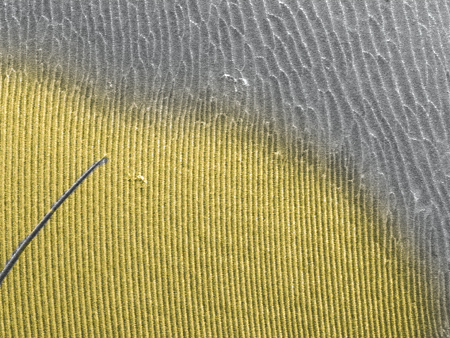 Detalė iš Pars stridens (geltona) ant pilvo pirmyn tergite į tam Pachycondyla villosa darbuotojo (Skenavimo elektronų mikroskopas, Roberto Keller / AMNH) Continue reading The incredibly loud world of bug sex
Chris Grinter, apie 20 Bir, 2011 Aš ruošiuosi išlaikyti kamuolys valcavimo su šios serijos ir pabandyti padaryti jį labiau įprastas. Aš taip pat sutelkti dėmesį į išryškinti naujas rūšis kiekvieną savaitę nuo masinių kolekcijų čia Kalifornijos mokslų akademijos. Tai turėtų duoti man pakankamai medžiagą… bent kelis šimtus metų.
 Grammia edwardsii (Erebidae: Arctiinae) This week’s specimen is the tiger moth Grammia edwardsii. Up until a few years ago this family of moths was considered separate from the Noctuidae – but recent molecular and morphological analysis shows that it is in fact a Noctuid. The family Erebidae was pulled out from within the Noctuidae and the Arctiidae were placed therein, turning them into the subfamily Arctiinae. OK boring taxonomy out of the way – all in all, it’s a beautiful moth and almost nothing is known about it. This specimen was collected in San Francisco in 1904 – in fact almost all specimens known of this species were collected in the city around the turn of the century. While this moth looks very similar to the abundant and widespread Grammia ornata, close analysis of the eyes, wing shape and antennae maintain that this is actually a separate species. I believe the last specimen was collected around the 1920’s and it hasn’t been seen since. It is likely and unfortunate that this moth may have become extinct over the course of the last 100 years of development of the SF Bay region. Grammia, and Arctiinae in general, are not known for high levels of host specificity; they tend to be like little cows and feed on almost anything in their path. So it remains puzzling why this moth wouldn’t have habitat today, even in a city so heavily disturbed. Perhaps this moth specialized in the salt marsh areas surrounding the bay – which have all since been wiped out due to landfill for real-estate (1/3 of the entire bay was lost to fill). Or perhaps this moth remains with us even today but is never collected because it is an evasive day flying species. I always keep my eye out in the park in spring for a small orange blur…
|
Skepticizmas
|














